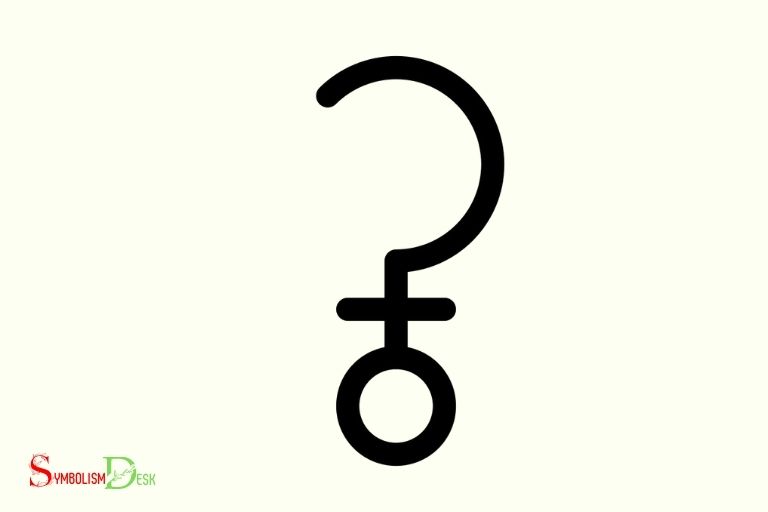What Does Demeter Symbol Mean? Fertility!
The Demeter symbol represents the Greek goddess of agriculture, fertility, and harvest, emphasizing growth, nourishment, and the life-sustaining power of the earth.
Demeter, as the goddess of agriculture, played a crucial role in ancient Greek society, where farming and the production of food were essential for survival.
Her symbol highlights her responsibilities and the significance of her role in Greek mythology. The symbol often features a bundle of wheat or a cornucopia, signifying abundance and prosperity.
In Greek mythology, Demeter and her daughter Persephone are central figures.
Their myth represents the cycle of life, death, and rebirth, as Persephone was abducted by Hades and taken to the Underworld, leading to Demeter’s mourning and the subsequent withering of the earth.
The eventual return of Persephone symbolizes the renewal of life and the start of a new agricultural season, further emphasizing Demeter’s role as a goddess of growth, nourishment, and life-sustaining power.
Interpretation of Demeter’s Symbol in Greek Mythology
| Symbol | Description | Associated Meanings |
|---|---|---|
| Cornucopia | A large, horn-shaped container overflowing with fruits, grain, and flowers. | Abundance, fertility, nurturing, and the harvest. |
| Wheat Sheaf | A bundle of wheat stalks tied together. | Agriculture, prosperity, and the Earth. |
| Torch | A lit torch or flame. | Life, transformation, and the search for knowledge. |
| Sickle | A curved blade used for harvesting grain. | Agriculture, harvesting, and the cycle of life. |
| Serpent | A snake or serpent wrapped around a staff or entwined in plants. | Regeneration, renewal, and the cyclical nature of life. |
| Mysteries | Symbols or objects associated with the Eleusinian Mysteries, such as a stalk of grain or a sacred chest. | Initiation, spiritual growth, and the mysteries of life and death. |
Key Takeaway

Five Facts About: The Symbolism of Demeter in Greek Mythology
Another common symbol associated with Demeter is the cornucopia, symbolizing abundance and nourishment. (Source: Greek Gods & Goddesses)
The initiation rites of the Eleusinian Mysteries were celebrated in the autumn, coinciding with the time of the harvest. (Source: Britannica)
According to the myth, when Persephone was kidnapped by Hades, the god of the underworld, Demeter refused to allow crops to grow until her daughter was returned.
This myth illustrates the impact Demeter’s emotions have on the earth’s fertility and the passage of the seasons. (Source: National Geographic)
What Is Demeter Symbol?
What Does Demeter Symbol Mean
Demeter, the ancient greek deity of agriculture and harvest, is one of the most significant symbols in greek mythology.
Demeter’s symbol reflects the goddess’s association with vegetation, fertility, and grain. In this section, we will delve into the meaning and origin of the demeter symbol, as well as explore its importance.
Definition Of Demeter Symbol
The demeter symbol represents the goddess’s connection to the earth and her role as a nurturing mother.
Some of the key aspects of the demeter symbol include:
- Grain: The demeter symbol often includes images of wheat or other grains, representing demeter’s association with agriculture and harvest.
- Sickle: Another common image in the demeter symbol is a sickle, representing the goddess’s role as a harvester.
- Mother and child: In some depictions of the demeter symbol, the goddess is shown holding a child, symbolizing her role as a nurturing mother figure in greek mythology.
Origin Of The Demeter Symbol
The origins of the demeter symbol can be traced back to ancient greece, where the goddess was widely worshipped as a deity of agriculture and fertility.
In greek art, demeter was often depicted with images of wheat, sickles, and other symbols of farming and harvest.
These symbols represented demeter’s role as a protector of crops and her close connection to the earth.
Importance Of The Demeter Symbol
The demeter symbol holds significant importance in greek mythology, representing the goddess’s role as a nurturer and protector of the earth.
The symbol remains popular today as a representation of the importance of agriculture and the natural world.
The demeter symbol is also a powerful reminder of the need to respect and preserve the earth’s natural resources for future generations.
The demeter symbol is a powerful representation of an ancient greek deity’s connection to the earth, fertility, and harvest.
Its meaning has continued to resonate throughout history, inspiring appreciation for agriculture, nature, and motherhood.
The Mythological Connections And Meaning Behind The Demeter Symbol
Demeter symbolizes the greek goddess of agriculture and fertility, and she’s often associated with the harvest season.
Her daughter, persephone, was abducted by hades, the king of the underworld; leading to demeter’s search to locate her daughter.
The Mythology Of Demeter And Hades
- Demeter was very protective of her daughter, persephone, and refused to allow her to be taken away from her side.
- When persephone went missing, demeter became devastated and went on a journey to search for her daughter.
- Hades had kidnapped persephone and unwillingly took her back with him to the underworld.
The Symbolic Meaning Behind The Connection Of Demeter And The Harvest
- Demeter symbolizes fertility, growth, and harvest, and she’s been associated with wealth and abundance.
- The goddess’ connection to the harvest season embodies the cycles of life and is a symbol of regeneration.
- To honor demeter, ancient greeks held festivals and rites of passage associated with the harvest season.
The Significance Of The Pomegranate Seeds In The Myth
- Hades tricked persephone into eating pomegranate seeds while she was in the underworld, making it impossible for her to leave the underworld.
- Persephone had to be with hades for one-third of every year due to her consuming the pomegranate seeds, resulting in the cycle of seasons.
- The event depicts the connection between life and death and the cyclical nature of existence.
Demeter symbolizes growth, fertility, and abundance and is associated with the harvest season.
Her story of searching for her daughter who was taken by the god of the underworld, hades, mentions the cyclical connection between life and death, which is re-enacted in the yearly cycles of the seasons.
The Importance Of Demeter Symbol In Greek Culture
The goddess demeter played a significant role in greek mythology and culture. She symbolizes the earth’s fertility, harvest, and agriculture.
This article will explore the importance of demeter’s symbol in greek culture, including her role in mythology and religion, ceremonies and festivals celebrated in her honor, and her influence on art and architecture.
The Role Of Demeter In Greek Mythology And Religion
In greek mythology, demeter was one of the twelve olympian gods and goddesses. She was the daughter of cronus and rhea and sister to zeus, hera, hades, poseidon, and hestia.
Demeter was the goddess of the harvest, and her roman equivalent was ceres.
Demeter had a powerful effect on greek religion, with her temple in eleusis being one of the most important institutions in ancient greece.
The greeks viewed her as a mother figure who provided food and nourishment for both humans and gods.
Due to her powers over fertility and the earth, farmers would often pray to her for abundant crops.
The Ceremonies And Festivals Celebrated In Honor Of Demeter
Demeter was a well-respected deity in ancient greece, and her worshippers celebrated her with numerous festivals and ceremonies.
The most significant of these was the eleusinian mysteries, a spiritual event that took place every year in the city of eleusis.
The festival was held in september or october and lasted for nine days. Only those who had been initiated into the cult of demeter were permitted to take part in the festivities.
Another significant festival was the thesmophoria, a three-day event celebrating the goddess’s role in agriculture, fertility, and marriage.
It was only celebrated by women and included fasting, sacrifices, and the exchange of gifts.
The Influence Of Demeter Symbol On Art And Architecture
Demeter’s influence extended beyond mythology and religion and permeated the world of art and architecture. One of the most well-known examples is the parthenon, which was built in the 5th century bce in athens.
The temple’s sculptural decoration depicted the goddess and her daughter persephone, reinforcing the importance of demeter in ancient greek culture.
Demeter’s symbol also appeared in other areas of ancient greek art, such as vase paintings. Depictions often showed the goddess holding a sheaf of wheat or the sickle used to harvest it.
Demeter’s image has survived through the centuries and continues to be a powerful symbol of fertility and agriculture.
Demeter’s symbol is a crucial aspect of greek culture, influencing every area of life from agriculture to art and architecture.
Her importance in greek mythology and religion cannot be overstated, and her worshippers demonstrated their respect for her with numerous festivals and ceremonies.
Despite being an ancient deity, demeter’s legacy endures to this day, reminding us of the importance of nature and the fertility it provides.
Understanding The Demeter Symbol In Modern Culture
The demeter symbol has deep roots in ancient greek mythology, where she was the goddess of harvest, fertility, and agriculture.
But what does the demeter symbol mean in modern culture? How is it used today? Let’s take a closer look. In modern culture, the Demeter symbol often represents themes of agriculture, fertility, and the cycles of nature. It is used in art, literature, and spiritual contexts to evoke ideas of growth and renewal. Similar to how symbols from other traditions are revisited today, such as the Hopi symbol meaning explained in various interpretations, the Demeter symbol serves as a bridge between ancient wisdom and contemporary understanding.
How The Demeter Symbol Is Used In Modern Times
The demeter symbol still holds immense significance in contemporary culture, where it is revered as a symbol of abundance, growth, and fertility.
Here’s how the demeter symbol is used in modern times:
- As a symbol of agricultural organizations and associations
- As a representation of biodynamic farming techniques
- As a symbol of femininity, motherhood, and nurturing energy
Demeter Symbolism In Literature And Media
The demeter symbol has been used extensively in literature and media as well, embodying different meanings and connotations.
Here are some key examples:
- In rick riordan’s percy jackson series, demeter’s symbol is the ear of wheat, highlighting her role as the goddess of agriculture.
- In the popular tv series, the handmaid’s tale, demeter’s iconic symbol of wheat is used as a symbol of rebellion and hope for a better future.
- In aldous huxley’s book, island, demeter is seen as a symbol of preservation and nurturing energy, supporting sustainable living practices.
Modern Interpretations Of The Demeter Symbol And Its Importance In Contemporary Culture
With the ever-evolving nature of culture and society, new interpretations for the demeter symbol have emerged in recent times.
Here’s what it means and why it’s important:
- A symbol of environmentalism and sustainable living practices, embodying the idea of nurturing and protecting the earth.
- A representation of feminist energies, challenging traditional patriarchal notions of power and valorizing caring, nurturing values.
- A symbol of hope and renewal, reminding us of the cyclical nature of life and the need for continued growth and abundance within ourselves and our environment.
The demeter symbol continues to hold great significance in modern culture, embodying different ideas and values that resonate with different people in various ways.
As we navigate through an age that increasingly values sustainable living practices and nurturing energies, the demeter symbol serves as a potent reminder of the powerful forces that guide and sustain us.
What Does the Scorpio Symbol Represent in Terms of Focus?
The Scorpio symbol represents intense focus and determination. Those born under the scorpio zodiac sign symbolism explained possess a natural ability to zone in on their goals, often exhibiting unwavering dedication. Known for their perseverance, Scorpios are driven individuals who excel at focusing their energy on achieving what they desire, making them formidable forces to be reckoned with.
FAQ About What Does Demeter Symbol Mean
What Is The Meaning Of Demeter Symbol?
The demeter symbol represents fertility, harvest, and the cycles of life and death.
Who Was Demeter Greek Mythology?
Demeter was the greek goddess of agriculture, fertility, and harvest.
What Does Demeter Symbolize Today?
Today, demeter symbolizes nature, fertility, and the cycles of life and death.
What Is Demeter Known For?
Demeter is known for being the greek goddess of agriculture, fertility, and harvest.
How Is Demeter’s Symbol Used Today?
Demeter’s symbol is used as a representation of fertility, nature, and the cycles of life and death in modern culture and media.
Conclusion
Taking into consideration the various elements that make up the demeter symbol, it’s clear that this ancient goddess represented much more than just agriculture.
She was a powerful matriarch who embodied the beauty and strength of motherhood, while also encompassing the themes of death and rebirth, abundance and loss.
In today’s world, her message and symbolism remain as relevant as ever, reminding us to honor the cycles of nature and to find strength in the face of adversity.
Whether contemplating the mysteries of life and death, or simply seeking inspiration in everyday struggles, the demeter symbol offers a timeless and compelling tale of resilience and perseverance.
By understanding its deeper meaning and embracing its lessons, we can tap into the power of the natural world and find renewed hope and purpose in our lives.
So let us honor this ancient goddess and her enduring legacy, and carry her wisdom with us through the seasons of life.






